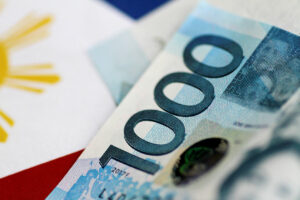ECONOMIC GROWTH is on track to outpace the rise in the National Government’s (NG) debt, with borrowing costs expected to go down as global central banks cut interest rates, the Department of Finance (DoF) said on Monday.
During the Development Budget Coordination Committee’s (DBCC) briefing before the House Committee on Appropriations, Finance Secretary Ralph G. Recto said the cost of borrowing remains manageable as it is “much lower” than the country’s gross domestic product (GDP) growth.
“In fact, our effective interest rate for next year is only 5.3%, which is very cheap considering that the average term of our debt is 7.5 years. If we remove inflation, our real interest rate is only 2.3%, far lower than our expected real GDP growth of 6.5%, which means we are on track to outgrow our debt,” he said.
A country’s debt is more appropriately measured on the size of its economy as this identifies its capacity to pay its obligations, Mr. Recto said.
“From 60.9% (debt-to-GDP ratio) in 2022, it fell to 60.1% in 2023. And we are determined to continue pushing it below 60% so we have enough buffer in case another crisis hits us,” he said.
According to the Bureau of the Treasury, the debt-to-GDP ratio is expected to inch up to 60.6% by end-2024. It sees the debt-to-GDP ratio falling to 60.4% in 2025, 60.2% in 2026, 58.4% in 2027 and 56.3% in 2028.
“The continuous decline in our debt-to-GDP ratio since the pandemic is one of the reasons why our credit ratings remain high… This means that we not only have the capacity to pay our debts, but we can have more access to cheaper financing,” he said.
The DBCC is targeting 6-7% GDP growth this year and 6.5-7.5% GDP growth in 2025.
As of end-June, the NG’s outstanding debt rose to a fresh high of P15.48 trillion, up 9.4% from a year ago. Debt is expected to reach P16.06 trillion at the end of 2024 and P17.35 trillion by end-2025.
“Mukha mang patuloy na lumalaki ang ating utang ngayon, pero patuloy naman na mas lumalago ang ating ekonomiya. Ibig sabihin, kayang kaya nating bayaran ang ating mga obligasyon (Even if it looks like our debt is growing now, but our economy is also expanding faster. This means we can repay our obligations),” Mr. Recto said.
Mr. Recto said the government is now paying off the “pandemic borrowings” inherited from the previous administration.
“We are now refinancing the large borrowings contracted during the low-interest rate period in 2020 to 2022 with new debts that bear higher interest rates. This is the reason why our interest payments for next year are higher by around 11%,” he said.
For 2025, the NG set its borrowing program at P2.55 trillion, 0.97% lower than this year.
The government is also allotting P2.05 trillion for its debt servicing program next year, up 1.19% from this year. Of this, P848.03 billion will go to interest payments.
Mr. Recto said he expects the growth in interest payments to moderate as central banks begin cutting policy rates.
Last week, the US Federal Reserve kept its key policy rate at the 5.25-5.5% range last week, but could start easing by September.
The Bangko Sentral ng Pilipinas has signaled a potential 25-basis-point cut at its Aug. 15 meeting.
Mr. Recto reiterated that the government’s current debt level is not a cause for concern.
“There is nothing inherently wrong with a country having debt, as long as the money’s used for the right purposes, such as growing the economy, which in turn creates more jobs, increases income and provides more revenues for the government,” he said.
“In our case, we are using debts to spur our stronger economic recovery by investing in more infrastructure and human capital development projects which have the highest multiplier effect on the economy.”
Meanwhile, Mr. Recto said that the country’s budget deficit is also still manageable.
“As a percentage of GDP, our deficit remains very manageable, at 4.5% in the first quarter,” he said.
The government set the budget deficit ceiling for this year at P1.48 trillion or equivalent to 5.6% of GDP. For next year, the budget deficit ceiling is at P1.54 trillion or 5.3% of GDP. — BMDC
